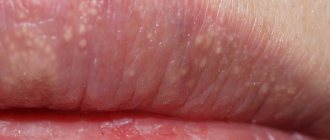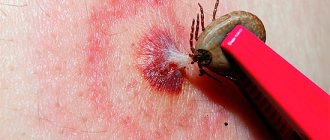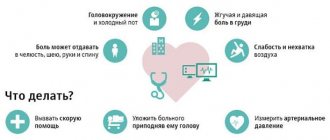According to WHO, colds and flu take us at least a year in total over the entire period of our lives.
The average person spends this year in an inactive state, suffering from elevated body temperature, lethargy, headaches and intoxication of the body. The severity of the disease depends on the aggressiveness of the virus that infects a person and the endurance of the patient’s immune system. Viruses can reduce overall resistance, which is why any disease that previously showed no signs of life can become fatal. Those at risk include pregnant women, the elderly and those with chronic diseases. Some patients with ARVI develop complications, often life-threatening. However, as practice shows, high mortality rates from complications from this group of diseases are also observed in young people and middle-aged people. The reason is that people of working age take acute respiratory viral infections lightly. This situation requires change and a thorough analysis of the question “How to treat ARVI?”
- Does vaccination help?
- Basic therapy for ARVI
- Symptoms
- When to see a doctor
- What is important when choosing drugs
- Treatment regimen
The last century has been marked by many great discoveries in the field of medicine, which writers previously mentioned only in science fiction novels, and patients themselves could only dream of such results in the treatment of previously incurable diseases. But at the same time, ARVIs are still infections that are difficult to control by doctors.
Among the main reasons for this: the high contagiousness of viruses and the massiveness of the damage - each of us has encountered a situation where, during a flu epidemic, almost the entire team gets sick at work, and quarantine is introduced in kindergartens during the same period. In addition, a mixed nature of infections is often observed, which complicates the course of the disease. Viruses are capable of changing quite quickly; the variability of their antigenic properties also leads to the development of mass diseases. Having had most infectious diseases, a person acquires immunity to pathogens, which reliably protects him from repeated infections. Acute respiratory viral infections, unfortunately, are an exception. What and how to treat ARVI? Is it possible through prevention to ensure that you never have to deal with colds and flu?
As the writer Kir Bulychev wrote in a children's book about Alice's adventures, a runny nose continues to be the last disease that doctors have not yet learned to fight. And of course, many have probably heard the saying that with treatment, a cold goes away in seven days, and without treatment - in a week. But does this mean that acute respiratory viral infections, including influenza, do not require the use of medications, and the patient only needs to drink plenty of fluids and stay in bed? This is wrong. And even though it is impossible to protect yourself 100% from infection, thoughtful and well-chosen treatment for ARVI can help you recover faster and protect you from the development of complications.
Causes of ARVI
- Influenza viruses. Common influenza pathogens are viruses of types A and B. On the 1-2 day of infection, the first symptoms of the disease appear. A person is sick for seven days. If left untreated, recovery will take longer and be more difficult.
- Rhinovirus microorganisms that enter the nasal mucosa. Rhinoviruses cause a runny nose and are transmitted by airborne droplets. 2-4 days after infection, the first symptoms of the disease will appear. With effective therapy, the patient will be cured within 5-10 days.
- Adenoviruses A, B, C, E, which cause acute infection of the respiratory tract and eyes. When infected with an adenovirus, the body temperature rises, the throat becomes inflamed, and conjunctivitis appears.
- Parainfluenza is a virus in which the larynx becomes inflamed, laryngitis develops, and then the bronchi become infected. Sometimes the nasal mucosa becomes damaged and a runny nose appears. The initial symptoms of parainfluenza appear 2-7 days after infection. Treatment for the disease lasts approximately 7-8 days.
Symptoms
Photo: prostudastop.ru
All ARVI (acute respiratory viral infections) have similar symptoms, which make it possible to combine the diseases into one group. For example, in most cases there is an increase in body temperature, which can reach high numbers or be of an unexpressed nature. Against the background of fever, a deterioration in the general condition occurs, which is manifested by the appearance of a feeling of weakness, general weakness, decreased appetite, increased fatigue, and decreased attention.
Flu
Influenza is one of the most severe viruses from the ARVI group. The disease begins with an increase in temperature. Fever during influenza reaches high numbers; as a rule, the temperature rises to 38 - 39 ° C, but can exceed 40 ° C. Against the background of fever, a deterioration in the person’s general condition is observed. General weakness is expressed, malaise, loss of appetite, increased fatigue, and absent-mindedness are observed. Gradually, a cough appears in the clinical picture of the disease. Initially, the cough is dry and unproductive, then becomes wet with the release of viscous sputum. Since the cough is painful (it is difficult for a person to clear his throat), pain in the chest muscles occurs. An important symptom of the flu is the so-called body aches. In addition, a runny nose, photophobia and pain in the eyes appear.
Adenovirus infection
Like other respiratory infections, adenoviral infection begins with fever, runny nose and wet cough. The fever lasts on average for 4 - 5 days, and can occur in two waves (a decrease in temperature is observed, then a rise again). A characteristic feature of this virus is the development of conjunctivitis, often unilateral, then the conjunctiva of the second eye is involved in the process. Abdominal symptoms (diarrhea, abdominal pain) are also noted.
Respiratory syncytial infection
The main symptom is a cough, which at first is dry, then becomes wet with the release of viscous sputum. The sputum is often clear or whitish in color. Cough occurs due to infection of the large bronchi by the virus. As the disease progresses, the process spreads to the small bronchi and bronchioles, which can subsequently lead to the development of respiratory failure. Symptoms of intoxication and fever are mild.
Rhinovirus infection
This infection is not accompanied by a significant rise in temperature. The main symptom is the development of rhinitis (inflammation of the mucous membrane of the nasal cavity). Rhinitis is accompanied by copious serous-mucous discharge from the nose. The amount of discharge is an indicator of the severity of the infection. In rare cases, rhinitis is accompanied by a moderate dry cough, as well as increased lacrimation caused by irritation of the mucous membrane of the eye (conjunctiva).
Coronavirus infection
There are no specific symptoms that distinguish coronavirus infection from other respiratory viruses. Symptoms such as a slight increase in temperature, cough, runny nose, and pain when swallowing may be observed. In rare cases, enlarged cervical lymph nodes may be detected.
Treatment of ARVI in adults
ARVI is treated in the following way:
- Bed rest. This is necessary to fight infection and prevent complications of the disease.
- Drinking plenty of water. Drinking plenty of warm water (3-4 l/day) helps to accelerate the elimination from the body of toxins produced by viruses that poison the entire body. It is advisable that the drink contains vitamin C. This includes rose hips, as well as juices and fruit drinks from cranberries, lingonberries, and oranges. Tea with raspberries, lemon and honey also has a beneficial effect on the body during ARVI.
- Rinsing the nose. The nasal cavity must be rinsed so that the infection does not spread throughout the body, and rinsing also reduces swelling of the nose and draws out mucus.
- Gargling. The throat must be gargled to prevent the infection from spreading. Gargling helps relieve cough. Soda-salt solution, decoctions of chamomile, calendula, and sage are suitable for gargling.
- Inhalation. This procedure is aimed at relieving cough. Among folk remedies, for inhalation you can use steam from jacket potatoes, as well as decoctions of chamomile, calendula, mint and other medicinal herbs. Among modern means, a nebulizer can be used for inhalation.
- Treatment of ARVI according to symptoms.
Treatment of influenza with folk remedies
While the treatment of influenza in adults and children should be trusted to specialists, traditional medicine can slightly alleviate the patient’s condition.
Here are the main ones for treating influenza:
- herbal medicine – mix 25 g of linden blossom with raspberry jam, brew and drink in small portions (this will help the body cope with the flu faster);
- freshly squeezed vegetable juice from beets, black radishes and carrots (helps the body defeat the virus faster);
- mint and lemon balm (tincture from these plants can improve the condition if you drink it regularly, several times a day);
- chamomile (a plant that actively fights infections);
- milk with honey (helps reduce fever and improve well-being);
- milk with onions (not the most pleasant drink, but it perfectly treats coughs and sore throats);
- lemon juice with honey (a source of vitamin C, helps a weakened immune system return to normal).
ARVI: treatment for adults - drugs are inexpensive but effective
Medicines that are prescribed to adults for ARVI for effective treatment are divided into the following groups:
- Antiviral drugs that respond to the causative agent of the disease. It is recommended to take medications with interferon, a substance that prevents the proliferation of viral cells.
- Antibacterial medications. Antibiotics are often prescribed if the disease is caused by bacteria, and for complications (pneumonia, bronchitis).
- Immunostimulants. These are preparations based on ascorbic acid. Vitamin C affects the production of interferon.
- Immunomodulators – prevent the proliferation of bacteria, strengthen the immune system. Basically, these are homeopathic preparations based on medicinal herbs.
Inexpensive, effective drugs for the treatment of ARVI in adults are as follows.
Interferons
Drugs in this category are characterized by antiviral, antimicrobial, immunomodulatory, and antiproliferative effects. Interferon stops the production of viral proteins. There are alpha and beta interferons.
The drug Betaferon is produced based on beta-interferon.
Alpha interferon in its pure form is sold as the drug Grippferon. Available in the form of a spray or drops. Costs 180-260 rubles.
The drug Viferon contains the agents alpha and beta interferons. Available in suppositories, it is used for the prevention and treatment of acute respiratory viral infections and influenza.
Immunomodulators
Antiviral drugs that stimulate the production of interferon. Known drugs: Immunal, Immudon, Ribomunil, Isoprenosine, Methyluracil.
Immunal is more effective in the treatment of ARVI, since it stimulates the production of white blood cells and increases their ability to phagocytose. As a result, the antibodies produced quickly eliminate the virus.
Synthetic antiviral drugs
Often prescribed for the treatment of ARVI. The most inexpensive and effective: Arbidol, Tamiflu, Remantadine.
Homeopathy
Drugs in this group are sometimes prescribed for the treatment of acute respiratory viral infections and colds. The most popular: Aflubin, Oscillococcinum, Vibrukol. Thanks to natural active agents, the drugs activate the immune system. The price of Oscillococcinum starts from 350 rubles.
Description
ARVI is an acute respiratory viral infection of various variants, that is, the causes of ARVI are a large number of pathogens of a viral nature. Regardless of the specific damaging agent, the disease occurs with symptoms of intoxication. The virus, entering the vascular system of the body, begins to multiply, and its metabolic products enter the blood. They are foreign, which is why typical symptoms of toxic effects on the body occur. In this group of diseases, the unifying link is also the target organs - the oral cavity, nasopharynx, larynx, bronchi and lungs, as well as the lymphatic system, are predominantly affected. All this allows us to combine these diseases into one group. In addition, there is statistical evidence that an increase in the number of cases is usually observed in the autumn-winter period, that is, people get sick during the cold season. With ARVI, there is a high risk of relapse, since the recovered person develops only short-term immunity. The incidence of ARVI in children and adults has been a leader among all acute infectious diseases for quite a long time. This is due to the fact that there are a large number of viruses and their subspecies, and the portal of infection is most often the respiratory tract, the protection of which is imperfect. The source of infection in the overwhelming majority of cases is a clinical patient, sometimes a person with an erased form of the disease (without clinical manifestations). The disease is transmitted through the air - practically the fastest way, especially in large organized networks (kindergartens, schools, offices and other institutions). In addition, ARVI in working women and men is also a social problem, since there are economic losses due to the fact that ARVI often develops in adults.
Classification of ARVI.
- Flu.
- Parainfluenza.
- Adenoviral infection (a feature of the infection is frequent damage to the eyes, lymph nodes, and intestines).
- Respiratory syncytial infection.
- Rhinovirus infection.
Complications from ARVI occur quite often, but usually this is due to untimely treatment or reduced immunity in a particular individual; the most common is the development of pneumonia, in which case bacterial flora joins a viral infection that is not treated. However, the special danger of ARVI caused by the influenza virus is isolated into a separate variant. With an unfavorable variant of influenza, a number of serious consequences of ARVI are possible:
- Pulmonary edema.
- Hemorrhagic pneumonia - infiltration in the lungs with a tendency to bleeding,
- Segmental lung syndrome is damage to the lungs in small areas.
- Vascular pathologies (frequent nosebleeds).
- Meningism (single or multiple meningeal signs in the absence of laboratory confirmed damage to the soft meninges).
- Neurotoxicosis in children is the most common cause of death due to influenza.
- Edema syndrome is the accumulation of fluid in the body without preventing its removal.
- Hemorrhagic syndrome is an increased tendency to bleed.
- Brain swelling.
The prognosis for mild ARVI and proper treatment is favorable; patients are recommended to undergo outpatient treatment with bed rest. In severe forms of ARVI, treatment is carried out in a hospital under strict medical supervision and control, however, the prognosis is usually relatively favorable. When the first signs of the disease appear, it is recommended to contact a general practitioner at your place of residence or an infectious diseases hospital.
List of drugs for ARVI and their inexpensive analogues
- Aspirin (antipyretic, anti-inflammatory drug, active ingredient – acetylsalicylic acid). Price: 135-210 rubles. Analogue: Acetylsalicylic acid – 4-14 rubles.
- Xymelin, Otrivin, DlyaNos (drops, vasoconstrictors, for the runny nose; based on a solution of 0.1% xylometazoline). Price: 110-180 rubles. Analog: Galazolin, costs 40-60 rubles.
- Immunal is a drug that supports the body's defenses. Active ingredient: Echinacea extract. Price: 230-250 rubles. Analog: echinacea tincture, price 60-180 rubles.
- Ambrobene, Lazolvan – cough medicine. Active ingredient: ambroxol. Price: 280-380 rubles. An analogue is Ambroxol: 30-80 rubles.
- Nurofen is an anti-inflammatory drug. The active ingredient is ibuprofen. Price: 70-140 rubles. An analogue is Ibuprofen: price 25-40 rubles.
- Panadol is an anti-inflammatory, antipyretic drug. Price: 50-100 rubles. Analog: Paracetamol, costs 5-15 rubles.
- Arbidol is an antiviral drug with immunomodulatory effects. Strengthens the body's defenses against ARVI and influenza. Price: 110-150 rubles.
- Viferon - the drug destroys viruses, strengthens the immune system. Active ingredient: interferon alpha 2-b. Price: 120-165 rubles.
- Kagocel – synthesizes interferon, characterized by antiviral and immunomodulatory effects. Price: 180-280 rubles.
Antiviral drugs
That category of drugs that are not immunomodulators act not on human immune cells, but on the virus itself. Due to the fact that they prevent viruses from multiplying and make them unviable.
The active ingredients of such a drug, when entering our body, must act at one of five stages in the viral replication cycles in order to destroy the virus:
1. Penetration and investment in the host cell
2. Unpacking the virus. The protein surface is removed and viral DNA or RNA is released
3. Synthesis of new components for the virus by the host cell
4. Assembling a new virus from various components
5. Exit of a newly formed virus cell from the host cell
Other inexpensive drugs for the treatment of ARVI
- Ascorbic acid. It has an anti-inflammatory, antipyretic effect, strengthens the immune system. It is inexpensive - from 9 to 25 rubles. Sold in the form of chewable tablets, sometimes with flavors (raspberry, mint).
- Cough medications. The most popular is Lazolvan, but Ambroxal and Abrol can replace it. The drug Acetal C thins and removes mucus, softens cough. And the most famous and cheapest cough medicine is Mucaltin.
- Decoctions with medicinal herbs can provide first aid for acute respiratory diseases. This could be a decoction of chamomile, linden, or breast tea. But you definitely need to know whether the patient is allergic to medicinal herbs. They will not replace full-fledged drug treatment, but will relieve some symptoms. The price of natural herbs is on average 50-75 rubles.
- Mustard plasters. Sold in pharmacies, the active ingredient is mustard powder. There are 10-20 sachets in a package. They are used as a local irritant and a distraction for acute respiratory viral infections and other diseases. Price: 40-50 rubles.
- Steam inhalations. It is not recommended to use it in the first days of the disease, because the patient’s condition may worsen. Inhalation in this case spreads the infection throughout the body due to the fact that the steam dilates the vessels of the nasopharynx and respiratory tract. Therefore, harmful bacteria are activated. When the patient's condition improves, the doctor may prescribe inhalations as an antiseptic, distracting, anti-inflammatory, antispasmodic remedy for ARVI (rhinitis, laryngitis, tracheitis, cough, bronchitis). Do not take inhalations if you are allergic to the active ingredients or have asthma. You can do inexpensive steam inhalations at home: take a bowl, pour boiling water into it, add 1-2 drops of eucalyptus essential oil (50-80 rubles), cover your head with a towel, and inhale the steam for an average of 5 minutes. The effect is noticeable immediately - mucus is coughed up and breathing improves.
What are antiviral drugs
Antiviral treatment works best when it is started soon after the onset of the disease. Regardless of what virus it is caused by. Medicines against viruses help keep the disease mild. It is also important that these drugs reduce the risk of complications. Which, if they arise, in turn require the further use of antibiotics.
Direct acting drugs
The most effective drugs are those that can suppress the assembly of a new virus, that is, prevent its reproduction in the human body. Substances in such a drug destroy some enzymes and DNA of the virus, so it will not be able to produce new copies of the virus.
Even once the virus enters the body, it will not be viable if you start taking antiviral medications as soon as possible when the diagnosis is made. Also, a virus in low concentration, unable to reproduce, will not have time to cause significant harm to our health.
Indirect acting drugs
This is a group of immunomodulators. In other words, antiviral agents aimed at increasing immunity. They do not interfere with the process of viral replication, but significantly increase immunity. Which leads to the suppression of viruses by one’s own immune cells.
But in some cases, a person's immune cells can kill their own healthy cells. Therefore, such antiviral drugs are risky to use if the patient has an autoimmune disease. So as not to make it worse. For this reason, it is not always safe to use an antiviral agent on your own, without medical advice.
Antibiotics, unlike antivirals, fight bacterial infections. Therefore, diseases for which antiviral drugs are prescribed for use are different, and for which antibiotics are recommended are different.
Unfortunately, some patients begin to take some medications on their own, without waiting for a diagnosis. Thus, out of ignorance, they choose the wrong group of medications, loading the body with unnecessary and useless chemical compounds. This not only worsens the disease, but also increases the possibility of complications.
Today, the pharmaceutical industry offers many drugs against various types of viruses. The form of the drug can be any:
● Liquid
● Inhalation powder
● Tablets
● Solution for injection
● Candles
Complications of ARVI
If you do not take the necessary measures to treat ARVI, complications can lead to the following diseases:
- Meningitis;
- Otitis;
- Laryngitis;
- Tracheitis;
- Pneumonia;
- Sinusitis;
- Sinusitis;
- Conjunctivitis;
- Neuritis;
- Heart diseases;
- Exacerbation of other chronic diseases.
Thus, when the first symptoms occur, treatment of ARVI in adults can be started independently with the help of medications, gargling, and nasal rinsing. If the temperature lasts longer than 5 days, you should definitely see a doctor, because Serious complications may occur.
Viruses in the body
A virus consists of a nucleic acid and an envelope made of protein. Different viruses differ from each other in structure. Which accordingly affects their reproduction - replication. That is, on the reproduction of similar new viral cells.
Viruses cannot produce copies of themselves because they do not have the necessary enzymes. Therefore, they require a host cell to enter in order to replicate. In a number of viruses, after replication, the host cell dies after use, but new viral cells are formed.
The structure of different viruses is different, so it is impossible to treat all viral diseases with the same antiviral drugs. Viral proteins undergo changes in their composition. In other words, the virus mutates. This is best known from the examples of the influenza virus and coronavirus.
The main difficulty when using an antiviral drug is to kill the virus, but not seriously affect the host cell. Therefore, a number of drugs must undergo long-term trials, giving a good response in the majority of patients, before the drugs are approved for treatment.
Antiviral drugs during pregnancy
Can pregnant women take antiviral drugs if necessary? Many of this group of medications are allowed, but some are contraindicated. Consultation with a doctor is required before taking medications.
For example, Oseltamivir is recommended for pregnant women with the flu. Because compared to other recommended antivirals, it has many positive responses to such treatment. Available studies confirm its safety and benefits during pregnancy. This medication has been repeatedly effective against coronavirus.
Baloxavir is not recommended for use by pregnant women or nursing mothers. This is largely due to the lack of data on the effectiveness or how safe the drug is.
That is, the decision about therapy will always be individual for each expectant mother.
Is it worth lowering the temperature during influenza and ARVI?
- It's individual. There are no general recommendations here. The temperature reaction is protective. This means that the body is trying to cope with the virus on its own. Traditionally, we say that since this is a natural reaction of the body, it is not worth artificially lowering the temperature if it is low-grade - up to 38 degrees. If it does not disturb the general condition.
Thermometer, thermometer.
Open sources on the Internet (SS0)
Is it possible to go to the bathhouse if you have a cold?
— Personal hygiene can also be maintained by those who are sick. It is better to choose a shower rather than a bath. You shouldn't lie in the bathroom either. Especially in the first days of illness. Warming up can be dangerous. The patient already has enlarged pores and a rapid heartbeat, but here comes an additional burden. This threatens the development of complications.
Medicine. Health. Cold. Flu.
CC0










